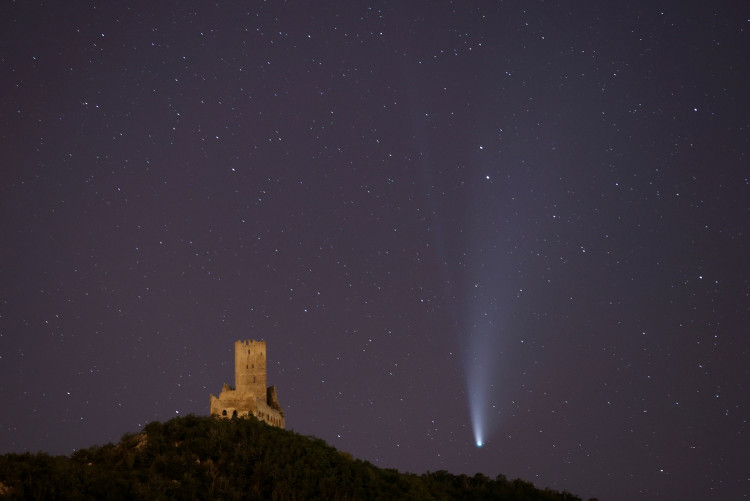Skywatchers around the Northern Hemisphere are so lucky they get to see Comet NEOWISE. But what makes this space rock so special?
Comet NEOWISE passed by closest to the sun on July 3 but was only visible in the sky over the weekend. For those who watched it keenly, the comet has been soaring higher in the sky just northwest belove the Big Dipper, according to Joe Masiero, deputy principal investigator of NEOWISE (NASA's Near-Earth Object Wide-field Infrared Survey Explorer, the NASA space telescope that first spotted the comet).
Perhaps the first thing that would interest an avid skywatcher concerning NEOWISE is that its orbital period spans 6, 677 years, meaning it won't be returning to our skies for more than six millennia. Other than that, here are some fascinating facts about the brightest comet of 2020.
Comet NEOWISE is officially known as C/2020 F3, discovered just this year on March 27 by NEOWISE, the asteroid-hunting afterlife of the Wide-field Infrared Survey Explorer (WISE) mission.
The most special thing about NEOWISE is that it's so bright you don't need a telescope to see it. You can easily spot it in the sky with just the naked eye, although using a telescope or some binoculars will offer a more detailed view.
"The fact that we can see it is really what makes it unique," Emily Kramer, a science team co-investigator for NASA's NEOWISE at NASA's Jet Propulsion Laboratory, said. "It's quite rare for a comet to be bright enough that we can see it with a naked eye or even with just binoculars.
At 5 kilometers in diameter, NEOWISE is "reasonably large but roughly average-size comet," traveling at approximately 231,000 kilometers per hour.
Masiero, who serves as deputy principal investigator of the NEOWISE mission, said the comet is moving about twice as fast as the Earth's speed around the sun. But don't expect that rapid clip to last. It will eventually slow down as it reaches its most distant point from the sun due to the comet's elliptical orbit, then return toward the inner solar system, and back up again when it journeys back to the sun.
NEOWISE has already made its trip around the sun and is now headed toward the outer solar system. And no, NEOWISE is not interstellar -- it's from our own solar system. There have been only two interstellar space objects observed so far: Comet Borisov and Oumuamua.
How's your view of comet NEOWISE?




